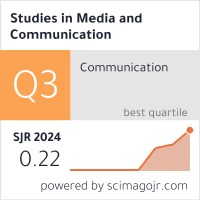The Presence of Digital Volunteer and The Absence of Government in Handling Disaster Management on X
Abstract
Extreme climate change around the world has disrupted the seasonal timeline and made it difficult to predict natural disasters, including in Indonesia. Data from BNPB (Badan Nasional Penanggulangan Bencana or National Board for Disaster Management) recorded that from January 1 to May 26, 2025, there were a total of 1,162 natural disaster events. The need for disaster information has become a hot topic in public discourse, especially on X, because formal government information sources are not disseminated quickly, thereby giving rise to digital volunteers.
The evolution of public opinion concerning disaster-related information can be effectively examined through social media platforms. Indonesia ranks among the top five countries globally with the highest number of users on X, making the dissemination of disaster information on this platform a matter of strategic importance. Given the platform’s extensive reach, it is imperative for government agencies to actively engage in shaping and guiding disaster-related narratives on X. Such involvement would help mitigate misinformation and influence public perception regarding disaster management. This study utilizes data from X to track the circulation of disaster-related content across Indonesia, focusing specifically on the period from May 1st to May 31st, 2025, during which a notable surge in disaster events occurred. The primary aim of this research is to explore how digital volunteers disseminate information about natural disasters on X, thereby addressing the informational void left by the absence of timely official communication. Key analytical dimensions include user volume, leading influencers, top-performing tweets, user interaction networks, and sentiment dynamics. The study employs social network analysis as its methodological framework, with X serving as the principal data source.
The findings of this study reveal that the dissemination of natural disaster information on the X platform is predominantly driven by digital volunteers, largely due to the limited presence and communication from government agencies. A total of 1,476 users were actively involved, forming 2,157 distinct communication networks. Sentiment analysis indicates that user responses comprised 16% positive, 39% negative, and 45% neutral expressions. Within these networks, the most influential account identified was @tanyakanrl, operated by an individual unaffiliated with formal institutions. Further analysis confirms that the leading source of disaster-related information originates from a member of the digital volunteer community, effectively filling the informational void left by the government’s absence on the platform.
Full Text:
PDFDOI: https://doi.org/10.11114/smc.v14i1.7936
Refbacks
- There are currently no refbacks.
Studies in Media and Communication ISSN 2325-8071 (Print) ISSN 2325-808X (Online)
Copyright © Redfame Publishing Inc.
To make sure that you can receive messages from us, please add the 'redfame.com' domain to your e-mail 'safe list'. If you do not receive e-mail in your 'inbox', check your 'bulk mail' or 'junk mail' folders.
If you have any questions, please contact: smc@redfame.com
------------------------------------------------------------------------------------------------------------------------------------------------------

